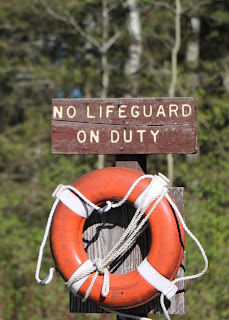Thursday, June 2
Today we wander through beautiful forests and find out why Minnesota is the "Land of 10,000 Lakes" - there are actually 11,842!
We stop at Sullivan Lake and Cadotte Lake and see many others en route to Grand Rapids.Very few people but we see several deer, a rabbit, a pheasant (haven't seen them in a long time) and what looked like a roadkill moose! Pretty rolling hills and forests as we wind around highways 15, 16, 5, 37 and 169. Mostly just two lanes.
At Grand Rapids we decide to go visit the Forest History Center. We ask a ranger there about the fine white fluffs that seem to be in the air for the past few days. It almost looks like the "cotton" from cottonwood trees but is tinier, and is smaller than dandelion down. To my surprise he says it is from the aspen trees, of which we've seen plenty! They are releasing seeds! I guess we've never been around aspen at the proper time to see this before. Indeed, I usually associate aspen with the Rocky Mountains but they are plentiful here where I suppose the temperatures are similar.
Whistling John showed us the office and explained the job of the clerk, who took care of keeping work records for each man, monitoring what was harvested each day, ordering supplies like food, horse feed; and delivering mail which came with the supplies every two weeks.
He had a bit of a store with tobacco, clothing and gear for those who needed it during the camp and recorded their purchases to be deducted from their pay at the end of season. He had his separate bunk but was on duty pretty much all the time. Each camp was expected to produce 6 million board feet in a season - about enough to build 500-600 houses.Next we saw the bunkhouse which held a series of double bunks, 2 men on the bottom, 2 on the top. There were 72 men total. They worked sunup to sundown, usually 7AM to 4PM in winter this far north. The Bull Cook was in charge of keeping the bunkhouse heated for the sewers, swampers, teamsters and ground hogs. He also did laundry for the cook and 3 cookies (assistants). Hygiene wasn't good. They worked 6 days a week and one of their entertainments was having lice races.The next person we met was "Honest John" who was the cook. He had to provide good and plentiful food because workers would leave for a different camp if the food didn't make them happy! Breakfast was typically "sweat pads" - pancakes, and there was always "wind timbers" - baked beans, fried potatoes and onions, and "loggin' berries" - prunes, coffee and "swamp water" - tea. He made 24 loves of bread each day in two big wood stove ovens as well as a lot of pies using dried fruits. No talking in the dining room - they were there to eat and get to work!
Lunch was served in the forest from a huge kettle of soup or stew that was wrapped in blankets and straw to stay warm when it was taken in the "swing dingle" sled to the site. Supplies were limited, so the cook had to be creative to keep people happy. Dinner was a smaller version of the other meals.Next we visited the Filer's Shack. It was a full time job to keep all the various saws sharpened daily. He had his own bunk and stove, and an extra bunk which was for the "Sky Pilot" - the visiting priest. I think this should be Brett's pseudonym!Next we met Jack, the Drafthorse who was taken care of by "Gabber". There were no wheels in camp. Everything was moved by horses and sleds or sleighs. Taking good care of the horses was important and area farmers often rented their horses to a camp for the season. A sleigh full of logs could weigh 40,000 pounds, so tracks were cut and filled with water so they would ice over and make it possible for horses to move these sleighs. This is the sleigh that was filled with water to fill the tracks.
Gabber also showed us the blacksmith's shop. He made horseshoes that had screw-in inserts with different inserts being used for ice, snow or dirt. The blacksmith also had to trim the horses hooves. He shared a shop with the "wood butcher" who made wooden tools, repaired sleighs and fixed harnesses and such.
The blacksmith also had to trim the horses hooves. He shared a shop with the "wood butcher" who made wooden tools, repaired sleighs and fixed harnesses and such.
After the logs were all cut and moved to the nearby Mississippi River, they were stacked until Spring and then dumped into the river to be transported to Grand Rapids. This involved a whole other crew who kept the logs from jamming and followed them down river in a Wanigan - a floating bunk house/kitchen.
The camps were only used for one, maybe two, seasons because they had to move where there would be a new forest to be felled.We park facing the lake and enjoy seeing white pelicans, eagles, geese, a great blue heron and other smaller birds. Electric heater is nice as the temperature goes down with the sun.
























No comments:
Post a Comment